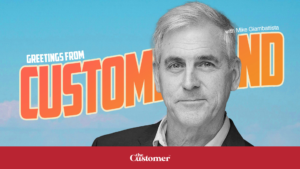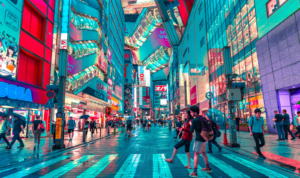Do people always grab an energy drink on a whim? Is choosing sparkling water or zero-sugar soda always an effort to be practical? Our study at Alpha Diver found that impulse buying behavior is a major factor in driving sales growth for beverage brands. And we don’t just mean “impulse buying” in the traditional sense.
What is impulse buying behavior?
Typically, we think of impulse buying behavior as when a consumer makes a sudden, unplanned purchase driven by a strong desire or emotional response. It’s often in response to external stimuli, like attractive packaging or a well-placed display (such as being in the checkout aisle).
From a consumer psychology perspective, when we buy based on impulse, we’re not thinking about the long-term consequences or benefits of the purchase—we’re focused on the immediate gratification it provides.
And while this might seem intuitive, especially in the beverage space, note that there are three other psychological reasons someone might choose your brand:
- Functionality / practicality: it “makes sense” or feels like the rational thing to do
- Conformity / social consensus: it’s something everyone likes and can agree upon
- Experience / discovery: it offers a new sensory experience or a chance to try something new and adventurous
Why brands must understand impulse-driven buying behavior
Understanding impulse buying behavior (versus the other three drivers) is crucial for brands because it directly impacts sales and market share. By identifying the psychological drivers behind these purchases, brands can create products, packaging, and marketing strategies that effectively tap into consumers’ desire for instant gratification.
Further, as consumer needs and preferences evolve, brands that stay attuned to these changes can adapt quickly and stay ahead of the competition. In recent years, we’ve seen a significant increase in impulse-driven buying behavior, likely due to the stresses and uncertainties of the world around us. People are seeking simple, quick ways to treat themselves and find moments of joy – and, for now, brands that can provide those moments are well-positioned for growth.
What we discovered
We looked at 50 top beverage brands and analyzed their sales data alongside the psychological measures we track. The results were eye-opening. Brands associated with the Impulse driver have seen significant increases in sales and household penetration. Examples include energy drinks like Monster and Red Bull, but also Sparkling Ice and VitaminWater.
Conversely, brands associated with the Conformity driver (ones that “everyone will like” or that “people like me agree on” saw declines. Examples here include Diet Dr. Pepper and Dunkin’ iced coffee.
Understanding the “impulse” driver
So, what exactly is this “impulse” driver? Psychologically-speaking, it’s the part of our decision-making process that’s the most instinctual and focused on instant gratification. When consumers are driven by impulse, they go for the option that sounds good and feels good right now. The one that gives us a quick win.
The power of understanding consumer behavior
Our findings show there’s strong predictive power in understanding the psychological drivers behind consumer behavior. By identifying which drivers are most influential in your category, you can make more strategic decisions about marketing, packaging, and product development to better appeal to your target audience.
How understanding impulse buying behavior helps increase sales
Here’s why it matters for brands to understand and cater to impulse-driven buying behavior in today’s environment. With this knowledge, brands can create products and experiences that are more likely to trigger those sudden, emotionally driven purchases, informed by:
- What to say: crafting messaging that highlights the immediate benefits of the product
- How to say it: designing eye-catching packaging and ads that will best grab shoppers’ attention
- When to say it: getting that message in front of shoppers at the point in their purchase journey that matters most for driving behavior.
By appealing to the Impulse driver, brands can increase sales, gain market share, and foster customer loyalty.
The takeaway
As a brand, it’s worth taking a closer look at how you can appeal to Impulse buyers. Are you positioning your products as a quick, feel-good pick-me-up? Does your packaging grab attention and highlight the instant gratification your product offers? By understanding and catering to the impulse driver, you could be well on your way to boosting sales and household penetration.





